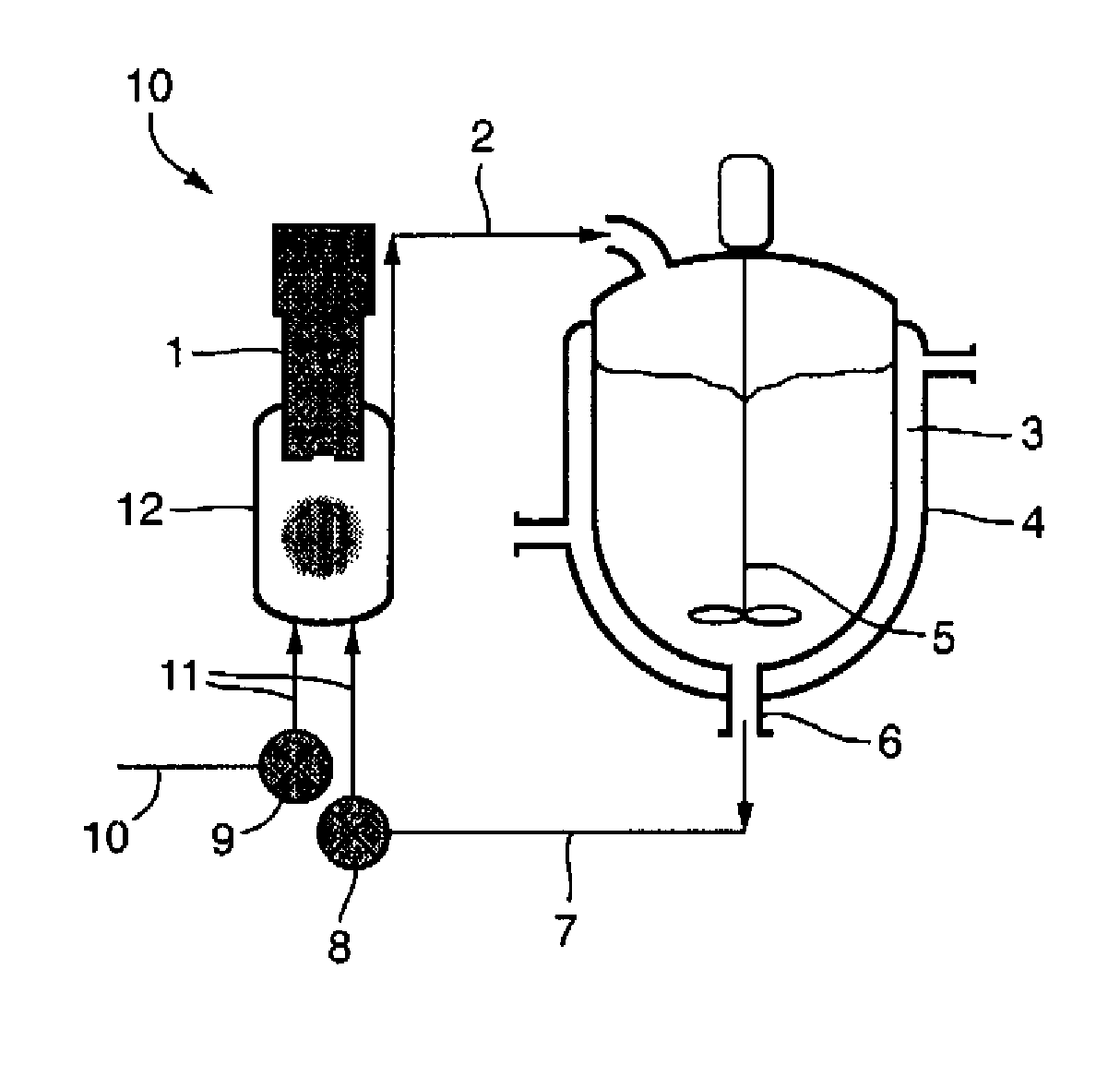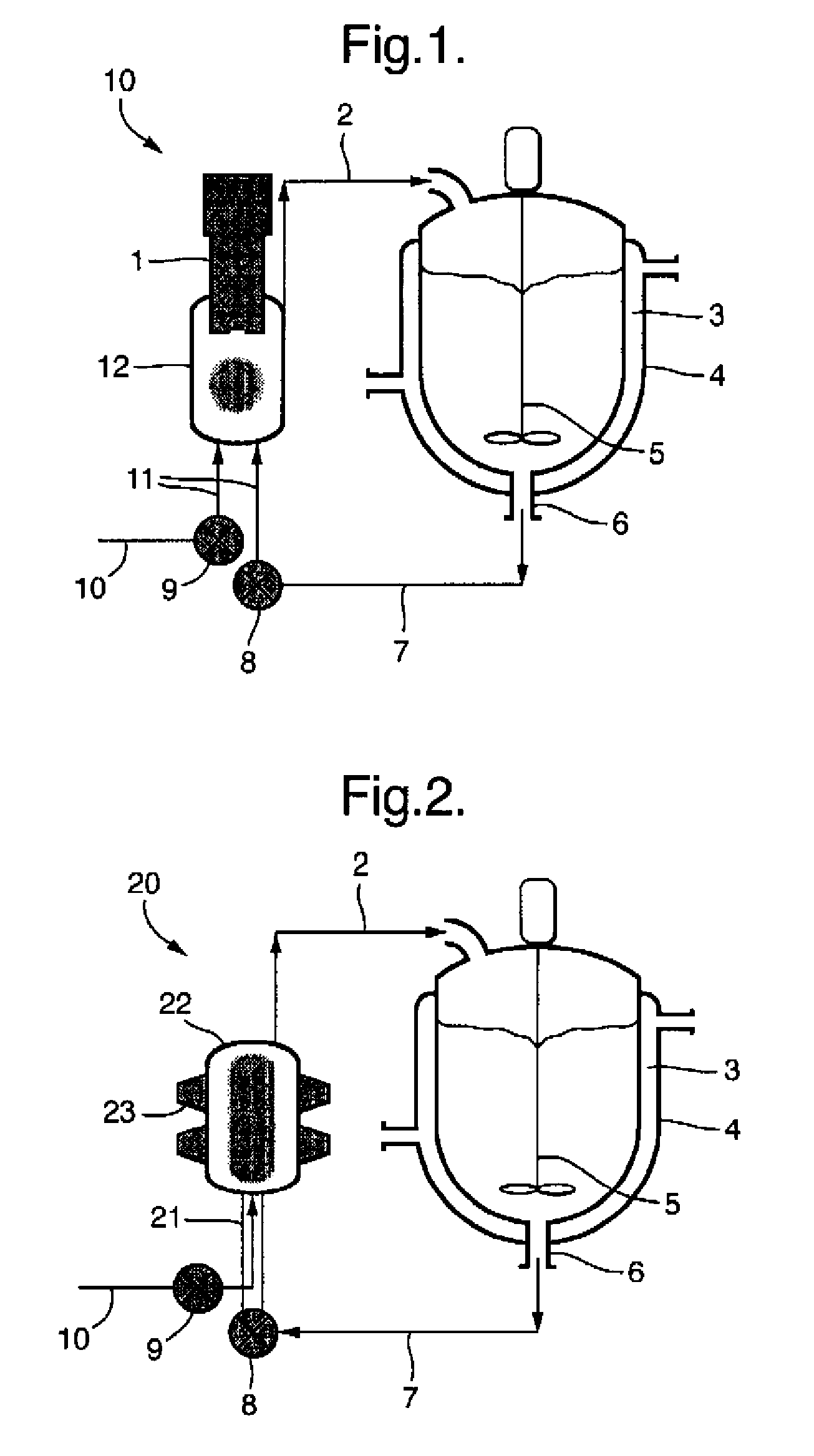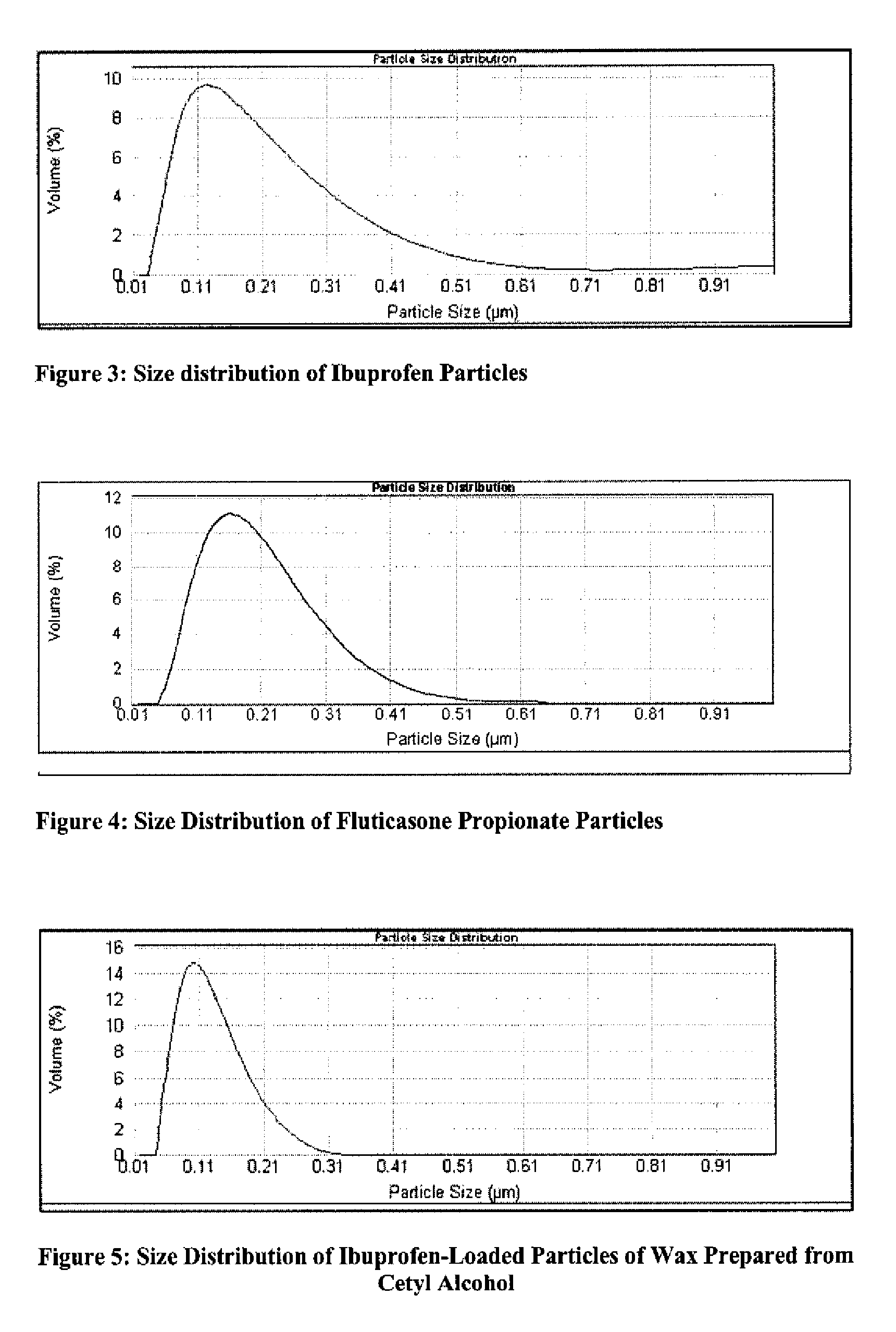Process for making crystals
a crystal and process technology, applied in the field of crystal preparation, can solve the problems of significant proportion of particles which are unsuitable for the desired use, affecting the activity of the medicament, and forming amorphous structures, etc., to achieve the effect of optimizing the activity and/or stability of the medicamen
- Summary
- Abstract
- Description
- Claims
- Application Information
AI Technical Summary
Benefits of technology
Problems solved by technology
Method used
Image
Examples
example 1
Ibuprofen Nanoparticles by Emulsion Crystallization and Evaporation
[0057]Water (800 mL) was charged to a 1 L stirred crystallizer fitted with a thermo-regulation jacket. The temperature was adjusted to 45° C. Water was pumped around a recirculation loop using a diaphragm pump (operating at 20 L / h) and a 250 ml thermo-regulated glass ultrasonic flow-cell fitted with a 30 mm diameter 20 kHz ultrasonic probe. The probe was held at the highest position in the flow-cell and sealed / clamped at a point of zero vibration (null point). The flow-cell was thermo-regulated at 45° C. Continuous ultrasound was applied at 15 W power, 5 micron amplitude. Ibuprofen (150 mg) was dissolved in dichloromethane (25 mL). The solution was dispersed in an aqueous phase held at 45° C. consisting of 800 ml of a 0.2% (w / v) solution of Tween 80. The dichloromethane solution was pumped into the ultrasonic flow-cell using a second inlet on the underside of the flow-cell at a rate of 20 ml / h. The resulting suspensi...
example 2
Fluticasone Propionate Nanoparticles by Emulsion Crystallization and Evaporation
[0058]Saline solution (0.5% w / w) was charged to a 1 L stirred crystallizer fitted with thermoregulation jacket. The temperature was adjusted to 45° C. Saline water was pumped around a recirculation loop using a diaphragm pump (operating at 20 L / h) and a 250 mL thermo-regulated glass ultrasonic flow-cell fitted with a 30 mm diameter 20 kHz ultrasonic probe. The probe was held at the highest position in the flow-cell and sealed / clamped at a point of zero vibration (null point). The flow-cell was thermo-regulated at 45° C. Continuous ultrasound was applied at 15 W power, 5 micron amplitude. Fluticasone propionate (0.5 g) was dissolved in dichloromethane (40 mL). The solution was dispersed in an aqueous phase held at 45° C. consisting of 800 mL of a 0.5% (w / w) saline solution. The dichloromethane solution was pumped into the ultrasonic flow-cell using a second inlet on the underside of the flow-cell at a rat...
example 3
Ibuprofen-Loaded Nanoparticles of Wax Prepared from Cetyl Alcohol
[0059]Water (1 L) was charged to a 1 L stirred crystallizer fitted with thermoregulation jacket. The temperature was adjusted to 55° C. Water was pumped around a recirculation loop using a diaphragm pump (operating at 20 L / h) and a 60 mL thermo-regulated glass ultrasonic flow-cell fitted with a 30 mm diameter 20 kHz ultrasonic probe. The probe was held at the highest position in the flow-cell and sealed / clamped at a point of zero vibration (null point). The flow-cell was thermo-regulated at 55° C. Continuous ultrasound was applied at 15 W power, 5 μm amplitude. Ibuprofen (0.2 g) was co-dissolved with cetyl alcohol (2 g) in acetone (10 mL). The solution was dispersed in an aqueous phase consisting of 1 L of a 0.3% (w / v) solution of Tween 80. The acetone solution was pumped into the ultrasonic flow-cell using a second inlet on the underside of the flow-cell at a rate of 20 mL / h. The resulting dispersion was cooled to 5° ...
PUM
| Property | Measurement | Unit |
|---|---|---|
| diameter | aaaaa | aaaaa |
| diameter | aaaaa | aaaaa |
| temperature | aaaaa | aaaaa |
Abstract
Description
Claims
Application Information
 Login to View More
Login to View More - R&D
- Intellectual Property
- Life Sciences
- Materials
- Tech Scout
- Unparalleled Data Quality
- Higher Quality Content
- 60% Fewer Hallucinations
Browse by: Latest US Patents, China's latest patents, Technical Efficacy Thesaurus, Application Domain, Technology Topic, Popular Technical Reports.
© 2025 PatSnap. All rights reserved.Legal|Privacy policy|Modern Slavery Act Transparency Statement|Sitemap|About US| Contact US: help@patsnap.com



